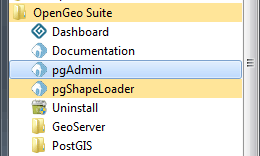Connecting to the PostgreSQL database with pgAdmin¶
There are a number of front-end tools available for connecting to, and working with, the PostgreSQL database. Among the most popular are psql, a command-line tool for querying the database, and the free and open source graphical tool pgAdmin.
Any data querying and manipulation you can do with pgAdmin can also be done at the command line with psql.
Note
This section uses the graphical utility pgAdmin which may not be automatically present, depending on the type of installation of OpenGeo Suite. Please see the Installation section for information on how to install these tools for your platform.
Launching pgAdmin¶
Depending on how OpenGeo Suite was installed pgAdmin may or may not have been installed. See the Installation section for installation instructions. Once installed follow the instructions below for your platform.
Mac OS X¶
On OS X, the pgAdmin application is accessible from the installer image under PostGIS Utilities.
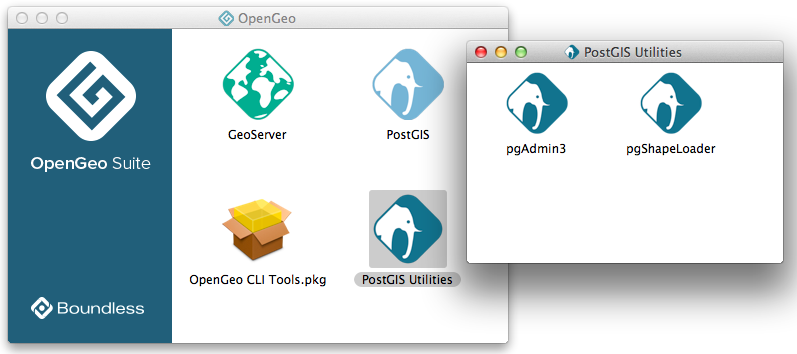
Launching pgAdmin on OS X
Linux¶
The pgAdmin application is installed via the pgadmin3 package, and can be launched from the terminal with the pgadmin3 command. On systems with graphical interfaces, pgAdmin III may be available from the Applications menu.
Note
Some extra steps need to performed before pgAdmin will be available from both local and remote hosts. Please see the section on Connecting to PostgreSQL on Linux for the first time for configuration information.
Working with pgAdmin¶
Depending on how you installed OpenGeo Suite, you may already have one pre-configured PostGIS server, localhost:5432, listed in the pgAdmin Object browser.
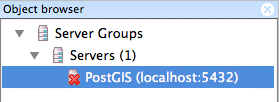
PostGIS server in pgAdmin
If you don’t have an entry for PostGIS listed, add a new server connection manually. Click and complete the New Server Registation dialog box to register a new server. Ensure the Host is set to localhost and Port is 5432 (unless you have configured PostgreSQL for a different port).
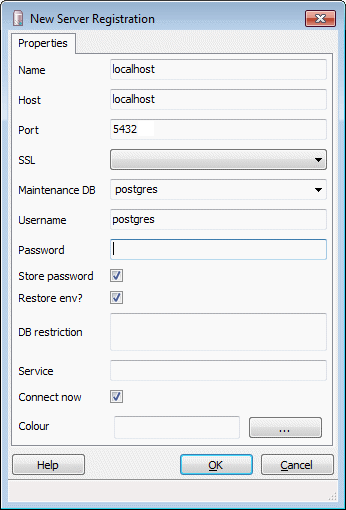
Connection parameters on Windows / OS X
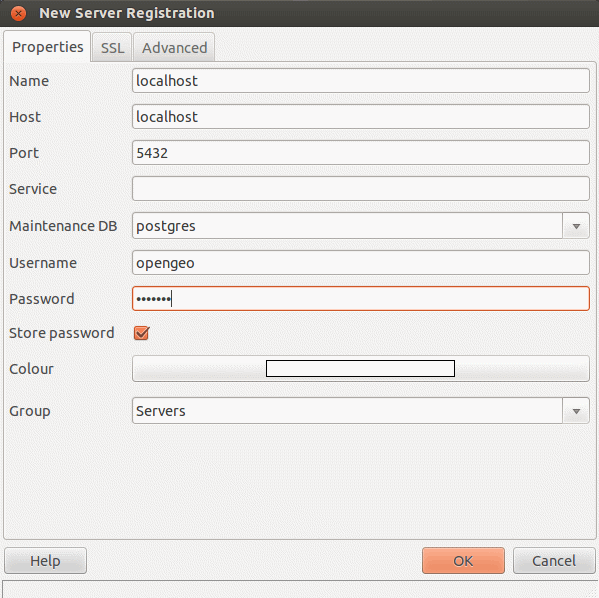
Connection parameters on Linux
To connect to the PostGIS server, double-click the PostGIS server item and provide the password when prompted.
To view the databases in this instance, expand the item. Double-click one of the listed databases to reveal the contents in the Object browser.
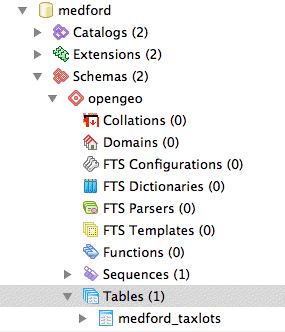
Navigating the database
When executing SQL queries, make sure you have the intended target database selected. The SQL Query dialog box will confirm the current database selection.
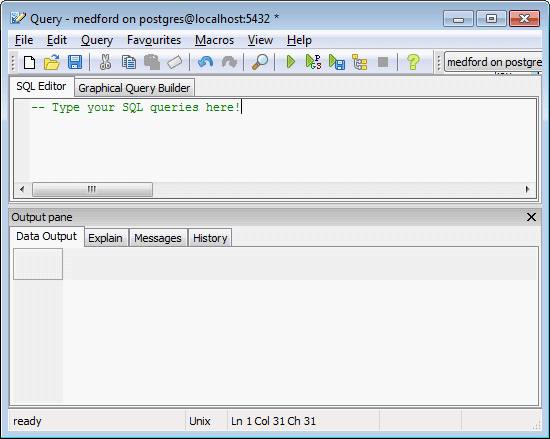
Querying a database
Note
If you are just installing OpenGeo Suite for the first time, there will only be a generic “postgres” database installed, with no tables, and you will need to create a new spatial database.
